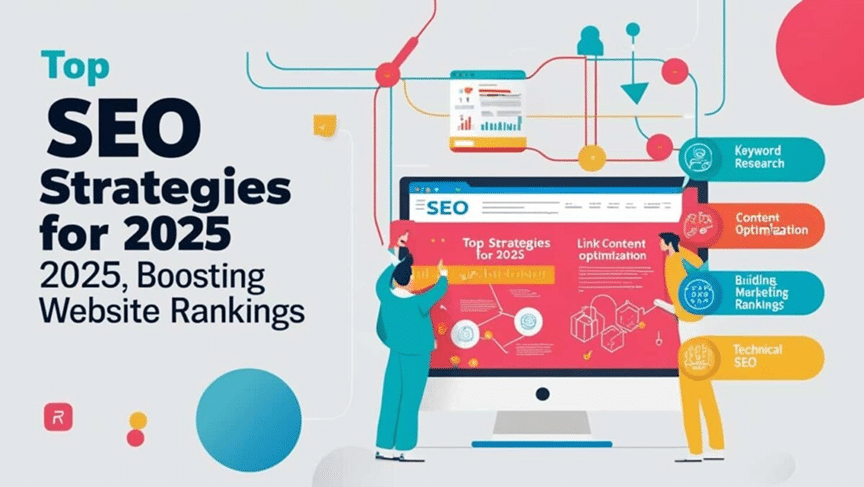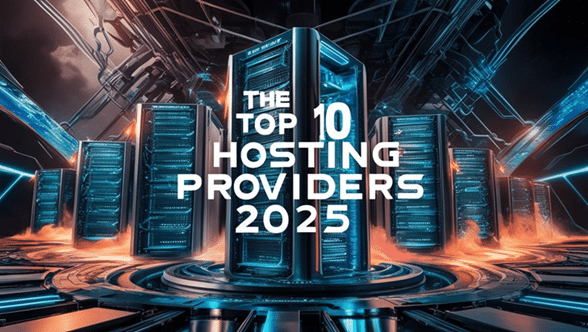The site is the top priority for security companies, bloggers, and e-commerce platforms as technology advances rapidly. The site becomes more popular than ever before in 2025. Cyber criminals attack sophisticated websites and exploit their weaknesses, causing serious financial, operational and recognized injuries. To secure strong website security, we need to keep this in mind.
A comprehensive guide to your site’s protection in 2025. Using security practices, we will investigate the latest equipment and technologies that will shape the site’s safety in the future. This insight will help you protect your digital appearance and create a safe online environment, whether you run a small blog or a large business portal.
Table of Contents
1. Introduction: The Imperative of Site Security in 2025
Cyberattacks have increased dramatically in recent years as more businesses move online. Keeping sensitive data secure, ensuring uninterrupted service, and building customer references will be crucial in 2025.
The complexity and frequency of cyber threats require a comprehensive security approach to prevent breaches and minimize losses.
Lastly, you will learn how new technologies and practices can help you protect your site in 2025.
2. Understanding the Cyber Threat Landscape: Emerging Risks for Site Protection
Before diving into specific security measures, it is important to understand what types of dangers face your site. By 2025, cyber criminals will distribute sophisticated strategies quickly, so you should be informed of the current danger landscape.
Types of Cyber Threats
- Ransomware and malware can infect your site, encrypt your data, and demand ransom. Ransomware attacks worry companies worldwide.
- Fishing attacks: Cybercriminals use deceptive emails and websites to garner sensitive information, such as login credentials or credit card details.
- DDOS attacks: Traffic from these attacks makes your site inaccessible to legitimate users. During high-traffic events or e-commerce sales, DDOS attacks can be devastating.
- SQL injections and XSS: attackers inject malicious commands or scripts through site code vulnerabilities, potentially compromising data or the website.
- Zero-day utilization: Software sellers are unaware of these vulnerabilities, so there is no update. Developers remain risky until they release a solution.
Evolving Cyber Threat Trends for 2025
- Automation and AI enable cybercriminals to launch targeted and swift attacks.
- When the Internet of Things (IoT) grows, connected units create new attack vectors that can compromise site security.
- Supply chain attacks: Hackers can target third-party services and integration that interact with your site, so secure every link in your digital ecosystem.
- Cryptojacing: Unauthorized cryptocurrency use is a growing concern that can drain server resources and affect performance.
- Social technique: Cybercriminals use psychological manipulation and technical tricks to access sensitive systems, emphasizing the need for extensive security training.
Understanding these dangers is the first step in creating a strong security strategy for websites. When you are aware of potential risks, you can take active measures to shape your site and protect your users.
3. Fundamental Principles of Site Security
Effective website security is based on a foundation of best practices that form several defense layers. This concept, known as “in -depth defense”, ensures that even if a security measure fails, there are places to reduce other losses.
Defense in Depth
- Many layers: Network fire walls, infiltration detection systems, use several layers of safety measures including encryption and physical safety.
- Surplus: Make sure that if there is a breach of a layer with certainty, extra control can limit access and damage.
- Regular revision: To identify weaknesses, conduct continuous safety assessment and input tests and address them before utilizing them.
Least Privilege Principle
- Access control: Grant user only permits required for their roles. If a hacker compromises an account, it reduces the potential effect.
- Roll – based access: Use roll -based access control (RBAC) to ensure that only authorized personnel reach the sensitive areas of the site.
- Monitoring and logging: Keep a wide log of user activities and regularly review them for suspicious behavior.
Secure by Design
- Security from start: Integrates safety in the design and development process instead of safety. This approach reduces weaknesses and streamlines compliance.
- Regular updates: Updated with the latest security update and updates for all software components.
- Encryption: Use a strong encryption protocol to protect data in transit and comfort.
By following these basic principles, you form the basis for a flexible safety structure that can be compatible with new dangers.
4. Choosing a Secure Hosting Environment: Enhance Your Site Security with Reliable Providers
Your hosting environment is the basis for performance and security on your site. Choosing a reliable hosting provider with a strong safety infrastructure is important for the site’s protection.
Key Features of a Secure Hosting Provider
- SSL/TLS support: Make sure your hosting provider supports a Safe Socket Layer (SSL) or Transport Layer Security (TLS) certificate, which creeps the data between the server and the client.
- DDOS security: Look for the hosts that provide the underlying DDOS protection to reduce the risk of rejection attacks.
- Regular backup: A safe host should provide automatic, regular backups to protect your data when it comes to BREECH or hardware errors.
- Firewalls and monitoring: Choose hosting suppliers that include advanced firewall solutions and continuous monitoring for suspicious activity.
- Scalability: As your site grows, the host environment should be scale without compromising safety or performance.
Managed vs. Unmanaged Hosting
Managed hosting services take responsibility for safety and maintenance from the shoulders by offering specialist inspection, regular updates and active danger management. While unchanged hosting can offer more flexibility, it also requires high -level technical expertise to maintain strong website security.
By choosing the right host environment, you decide the platform for a safe and flexible site that can better carry cyber threats.
5. The Importance of Regular Software Updates and Patches: Strengthening Your Site Security with Timely Upgrades
One of the most important aspects of security security is to ensure that all software components are updated regularly. Old software is a common entrance point for attackers, making timely updates and updates needed.
Software Vulnerabilities
- Outated CMS: Content Management System (CMS) such as WordPress, Zoomla or Drupta are popular goals for hackers when not updated.
- Plugin and theme risk: Third -party plugins and themes can introduce weaknesses if they are not updated regularly or if they come from incredible sources.
- Server software: Operating systems, web servers and database management systems also require regular updates to patch security holes.
Best Practices for Updates and Patches
- Automatic updates: where possible, activates automated updates to CMS, plugins and other software components.
- Regular revision: Plan periodic audit to ensure that all software is on and any old component is immediately updated or replaced.
- Update the test in the staging: Before distributing updates on your live website, you must test them in a staging environment to avoid compatibility problems or shutdown.
- Monitor Vulnerability Report: Be informed of the weaknesses known in the software you use and subscribe to security advisers.
Keeping your software up -date is one of the most effective ways to promote website security and protect your site from new dangers.
6. Implementing SSL Certificates and Enforcing HTTPS: Encrypt Your Data to Boost Site Security
SSL certificates and HTTPS site are important security components. The encrypted data that was exchanged between your site and its visitors, and made sure sensitive information remains private and safe.
Why SSL and HTTPS Matter
- Data encryption: SSL/TLS encrypts the data transferred between your server and the user’s browser, and prevents the cutting of hackers.
- Trust and reliability: HTTPS websites are considered safer, which can increase user confidence and improve the conversion frequencies.
- SEO Benefits: Search engines, especially Google, prefer safe websites, and having HTTPs can positively affect search ranging.
- Compliance: Many rules and data security standards require the use of encryption for sensitive information.
Steps to Implement SSL
- Buy a certificate: Select a known certificate authority (CA) and buy an SSL certificate that meets your requirements. Consider options such as Extended Verification (EV) certificate for extra confidence.
- Install and configure: Follow the guidelines of the coughing provider to install and configure the SSL certificate on your server.
- Redirect http about https: set permanent redesigns (301 forwarding) to ensure that all traffic is directed to the SAFE HTTPS version of your site.
- Regular renewal: Keep track of expiration dates for certificate and renew them immediately to maintain uninterrupted security.
By implementing SSL and using HTTPs, you market website security and create a safe browsing environment for visitors.
7. Deploying Web Application Firewalls (WAFs): Advanced Measures to Safeguard Site Security
A web application is an essential tool in the firewall (WAF) the site’s security arsenal. It acts as an obstacle between your site and potential attackers, filters malicious traffic and prevents general attacks such as SQL injection, scripting across the site (XSS) and other utilization.
Benefits of a WAF
- Real -time threat protection: WAFS monitors frequent traffic and blocks malicious requests before reaching your site.
- Adaptable rules: You can configure WAF with customized rules to fit the unique weaknesses and requirements of your site.
- Limitation of zero-day attack: Although no solution can provide 100% protection against zero-day exploits, a well-configured WAF can reduce the risk of filtering suspected traffic patterns.
- Compliance and logging: Many WAFs provide detailed logging and reporting features, which can help you monitor attacks and make compliance with data security rules.
Popular WAF Solutions
Think of cloud-based WAFs such as CloudFlaare, Sukuri or AWS WAF, which provides strong security and scalability. For those who manage their own infrastructure, Open Source options such as a modest security site provide a flexible solution to increase safety.
Posting WAF is an active measure that can promote website security by stopping a wide range of attacks before they benefit from the weaknesses of your application.
8. Intrusion Detection and Prevention Systems: Real-Time Solutions for Enhanced Site Security
IDS and IP are crucial to website security. They monitor network traffic for suspicious activity, use you for potential dangers, and often block functional activity automatically.
Key Functions of IDS/IPS
- Monitor and Warn: The IDS system detects infiltration and vigilant administrators in real time, responding quickly to new threats.
- Automatic Defense: The IPS blocks suspicious activity and reduces attackers’ attack window.
- Details: These systems log events for forensic analysis and security reforms.
- IDS/IPS solutions can be integrated with firewalls, SIM, and other safety equipment for a complete defense strategy.
Implementation of ID -er and IP is an important way to promote website security by ensuring that potential infiltration is identified and before they can cause significant damage.
9. Data Backups and Disaster Recovery Plans: Ensuring Continuity and Resilient Site Security
Even with strong safety measures, fractures and system errors can occur. A well-designed backup and disaster recovery plan is an important component of security that ensures that your data is safe and your site can be restored quickly in an event.
Best Practices for Data Backups
- Schedule automatic website file and database backups. Frequency should reflect data changes.
- Backups should be stored in multiple locations, including offsite or cloud storage, to protect against physical disasters.
- Version: Keep multiple backups to roll back to a state before a fracture or failure.
- Testing recovery procedures: Test backup restoration regularly to ensure you can quickly fix your site.
A solid backup and disaster recovery is one of the most effective methods for promoting website security by reducing downtime and loss of downtime during an event.
10. Strengthening User Authentication and Access Control: Robust Access Management for Superior Site Security
User authentication and access control page are important aspects of security. To ensure that only authorized users can access the sensitive areas of your site, reduces the risk of internal and external violations.
Best Practices for User Authentication
- Use multifactor authentication (MFA) to add security beyond the username and password.
- Strong password rules: Use strong, complex passwords and change them often.
- Limit the number of failed login attempts with Account Lock Policies to prevent Brut Form Attack.
- RBAC: Take-up permits based on user roles to ensure each user has access to the resources they need.
- Single Sign-On (SSO): SSO simplifies multi-system authentication while maintaining security.
By implementing strict authentication and access control measures, you can significantly market the site’s security and protect your site from unauthorized access.
11. Secure Coding Practices and Regular Code Audits: Building Resilient, Secure Site Infrastructure
The basis for site security begins with the code that provides strength to your site. Safe coding practices and regular encouragement help help identify and eliminate weaknesses before attackers exploit.
Secure Coding Principles
- Entrance Confirmation: Make sure all user inputs are validated and cleaned to prevent injection attacks such as SQL injections and XSS.
- Error handling: Use appropriate incorrect handling to avoid revealing sensitive information through error messages.
- Code assessment: Perform regular code assessments and audits to identify potential security weaknesses.
- Use of frames: Properly outline and utilization libraries that are regularly updated and maintained.
- Standards Follow: Follow the industry standard security guidelines and best practice, such as OWASP (Open Web Application Protection Project) recommendations.
Revoting your code regularly and adopting secure coding practices not only improves functionality, but also increases website security by reducing the risk of exploiting weaknesses.
12. Conducting Vulnerability Scanning and Penetration Testing: Proactive Strategies to Boost Site Security
No websites are completely immune to attacks, which is why regular vulnerability scanning and penetration tests are important components of a wider security strategy for websites.
Vulnerability Scanning
- Automatic Scanner: Use automatic tools such as Nessus, Openwas or Qualis to scan your site for known weaknesses.
- Regular assessment: Scan regularly to identify new weaknesses when they occur.
- Remedial: Develop a plan to immediately address any problem identified during the scan.
Penetration Testing
- Ethical hacking: Renting professional entrance examiners to simulate real attacks and highlight weaknesses in the defense of your site.
- Comprehensive tests: Make sure tests cover all aspects of your site, including network infrastructure, webapp and third -party integration.
- Action Report: Use the insight obtained from the test to prioritize and fix security weaknesses.
By scanning regular weaknesses and performing penetrated tests, you can continuously promote the security of the site and keep a step ahead of potential attackers.
13. Defending Against DDoS Attacks: Strategies to Maintain Site Security Under High Traffic
Distributed Daniel of Service (DDOS) Attack is a major threat to the site’s website and website security. These attacks overwhelm your server with traffic make your site out of the reach of legitimate users.
Mitigation Strategies for DDoS Attacks
- DDOS CONSERVATION SERVICES: Use DDOS Beating Services provided by companies such as Cloudflare, Akamai or Imperva. These services can absorb and filter malicious traffic before reaching your site.
- Rate Limited: Help overload, configure your server to limit the number of requests per IP addresses per IP address.
- Traffic analysis: Monitor traffic patterns and set notice to detect unusual growth that may indicate the ongoing DDOS attack.
- Surplus and failure: Make surplus in your infrastructure so that traffic can be resumed in case of an attack.
Using these measures is necessary to promote website security, by ensuring that your site remains available even under attacks with high vessels.
14. Securing APIs and Third-Party Integrations: Extending Comprehensive Security Across Your Site
APIs and third -party integration expand the functionality of your site, but also introduce further weaknesses. It is important to secure these components to maintain the general site’s safety.
Best Practices for API Security
- Certification and authority: Use a strong certification mechanism (eg OAuth 2.0) to control access to your API.
- Encryption: Data sent through API using HTTPS to prevent cutting.
- Speed limit and gas: Prevent abuse by limiting the number of API requests from single source.
- Regular revision: Perform security audit and vulnerability assessment on API and third -party integration.
By ensuring API and external integration, you can reduce potential risks and increase the site’s safety throughout your digital ecosystem.
15. Employee Training and Security Awareness: Cultivating a Culture Focused on Site Security
Human error is one of the main causes of security breach. Constant training and a strong security culture are important to maintain the site’s safety at high level.
Strategies for Effective Security Training
- Schedule regular workshops on cyber security for all employees, including developers and administrative staff, to provide best practices training.
- To teach employees to spot and report suspicious e-post messages, simulate fish attacks.
- Guidelines: Create and implement clear security policies and processes in your company.
- Access control: Limit employees to job-related systems and data.
- Exercise your event response plan regularly to prepare your team to act quickly in a violation event.
The creation of a strong security culture through continuous education is a proven way of promoting the security of the security site and reducing the risk of internal formula hazards.
16. Leveraging AI and Machine Learning for Advanced Site Security: Embracing Future Technologies for Enhanced Protection
AI and ML in Real Time Cooker automate responses to predicable analyses and cyber threats, changing security. By 2025, these technologies will help achieve digital assets.
Benefits of AI-Powered Security
- Real time monitoring: AI systems can analyze large amounts of data in real time, and identify rapid deviations and potential threats than traditional methods.
- Predictive analyzes: Machine learning algorithms can predict potential weaknesses and attack vectors, so that active measures.
- Automatic reactions: AI-driven security solutions can automatically block suspected activity and start the event reaction processes and reduce the effect of an attack.
- Continuous improvement: When these systems learn from each event, they constantly improve identity and mitigation.
Implementing AI-Driven Solutions
- Safety platforms: Consider Dark or Vectra AI for danger detection.
- Customized solution: Organizations with essential competence can improve website security by developing customized machine learning models.
- First, integrate AI solutions with your current security infrastructure to ensure optimal performance.
By using the power of AI and machine learning, you can greatly promote website security by staying out of emerging dangers and by automating significant defense mechanisms.
17. Emerging Trends in Site Security: Zero Trust, Blockchain, and Beyond – Future-Proof Your Digital Defense
The area of security security is constantly evolving, and many new trends are ready to reopen the way they protect their digital assets in 2025.
Zero Trust Architecture
- Concept: Zero Trust is a security model that believes that no user or system depends on by default, whether in or outside the network circuit.
- Implementation: Adopt a zero-Trust approach by verifying each access effort and reducing the page effect of your network.
- Benefits: This model reduces the risk of internal formula hazard and limits the damage caused by fractures.
Blockchain for Security
- Decentralization: Blockchain technology prevents tampering and improves data integrity.
- Use cases: Blockchain can secure transactions, identification, and software updates.
- Future impact: As a blockchain technology, it will improve website security by providing tamper-proof audit trails.
Cloud Security and Serverless Architectures
- Cloud-First Strategy: As more companies move to the cloud, blame must be secured. Cloud providers offer strong safety features, but you must configure them.
- So you can focus on application-level security, serverless data processing removes the infrastructure from the attack surface.
- Integrated monitoring and automatic F been ache are common in cloud-based security solutions.
The Role of Quantum Computing
Future ideas: Quantum calculation holds both risks and opportunities for website security, despite its early stages. Quantum-resistant encryption is developed for the future when quantum computers can break encryption.
Being informed about these new trends will help you adapt the security strategy for your site to meet tomorrow’s challenges.
18. Conclusion: Building a Resilient Digital Future with Advanced Site Security
Learning examples of real world can provide valuable insight into how effective security measures can protect digital assets and reduce the effect of cyber attacks.
Case Study 1: E-Commerce Giant Defends Against Ransomware
An advanced ransomware attack threatened to shut down an international e-commerce platform’s database. The company separated BREECH, restored data from backup, and avoided a major shutdown thanks to a strong website security strategy that included frequent backups, a comprehensive disaster recovery plan, and an AI-driven intrusion prevention system. This proactive approach prevented millions in losses and boosted the company’s credibility.
Case Study 2: Financial Institution Implements Zero Trust
A large financial institution infected a zero-trust safety model to protect sensitive customer data. With strict access control, continuous monitoring, and real-time analysis, the institution reduced its vulnerability to external and internal threats. This case study shows how advanced websites can build trust and improve data security in heavily regulated industries.
Case Study 3: Healthcare Provider Secures Patient Data with Blockchain
A health care provider used blockchain to secure patient data and comply with data security rules. The patient created a decentralized, tamper-proof laser for patient records to prevent data breaches. This novel website security method improved data integrity, openness, and patient confidence.
When looking ahead to 2025, strong websites are crucial. Maintaining self-confidence, continuity, and digital asset protection in a world where cyber threats evolve quickly is crucial.
These best practices—adapting the host environment, implementing HTTPs, distributing WAF, and using AI-operated security solutions—create a layered defense that reduces risk and prepares for future challenges.
Need Assistance or Have Questions?
You want to know if your site will perform better in 2025. Visit the DWM or call +91-92097677989 if you would like to learn more about these tactics or get some one-on-one assistance. By using our services, we can turn every click into a loyal customer.
Send us a message if you have any questions! Let us know what you think by contacting us!





